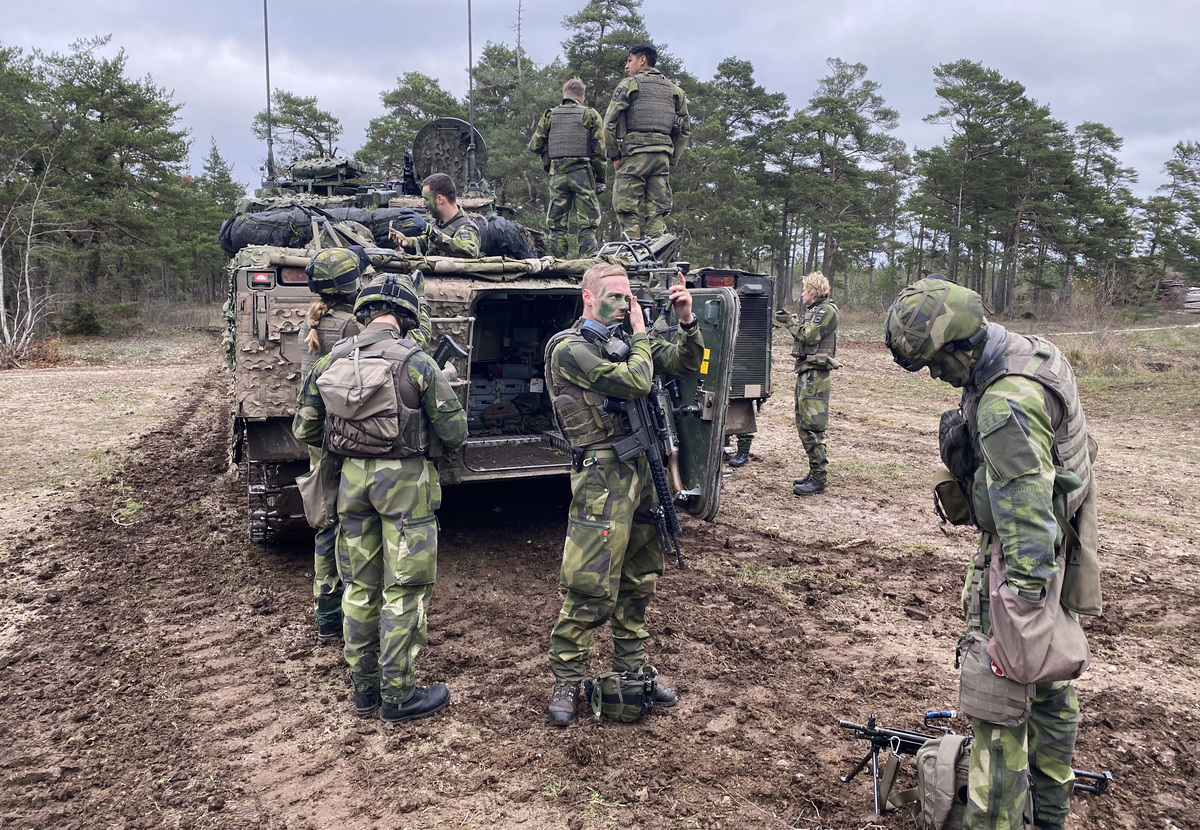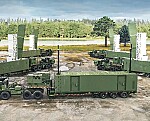The inspirational Swedish model of military service: Seven percent of the most capable recruited annually
Over-applications for Home Guard units, strong motivation for military service, and general support for the army – this is contemporary Sweden. Although some 18-year-old Swedes have been required to re-enlist compulsorily since 2017, since the Russian invasion of Ukraine the year before last, service in the armed forces has enjoyed increased interest among young people. Each year, a conscription committee selects several thousand of the best and most motivated, an average of one-fifth of whom remain in the army after the war is over.
The Ukrainian-Russian war has changed much in Sweden. Swedes are now significantly more interested in their armed forces, compulsory military service, and joining militia units. "Three times more people are signing up than we have positions available," said Colonel Dan Rasmussen, who is in charge of the militia on the island of Gotland. Located in the middle of the Baltic Sea, about 200 kilometers from Russia's Kaliningrad region, Gotland symbolizes a shift in Sweden's approach to defense. During the Cold War, it was the most militarized part of Sweden, with four regiments and coastal artillery. However, the last soldiers left the island in 2005. But the annexation of Crimea and the conflict in eastern Ukraine in 2014 woke Stockholm from its "peaceful slumber."

The Swedish government has decided to put troops back on Gotland, and Colonel Rasmussen now commands about a thousand men and women (including members of the Home Guard). By 2027, the island's military forces are to grow to a task force of 4,000 troops. Twenty Leopard 2 tanks and an equal number of CV90 infantry fighting vehicles can already be deployed on the Baltic island. In addition, the Swedes are building a new base on Gotland on the site of a former military training area near the town of Visby. It will certainly also be used by soldiers on compulsory military service.
Like many other Western countries, Sweden mistakenly believed that war would not break out in Europe in the foreseeable future and consequently reduced spending on its armed forces. However, the situation changed rapidly, and Stockholm has repeatedly increased its defense budget in recent years. According to the German magazine Loyal, this year it will reach the two percent of GDP required by NATO. The army is small in terms of numbers, with 18,000 full-time soldiers serving in the armed forces. In proportion to the population (Sweden has 10.5 million inhabitants), this is less than the Czech armed forces (27,000 soldiers for a population of 10.9 million). However, the Swedish army is extremely well equipped with modern technology. Sweden has 110 Leopard 2 main battle tanks, four modern submarines, five Visby-class corvettes, and 96 JAS-39C Gripen multi-role fighters. Much of this equipment is produced domestically by the defense company Saab.
In addition to professional soldiers, the Swedish Armed Forces rely on an annual conscription of 8,000 individuals, who must participate in regular training exercises for eight years following their compulsory military service. This pool of 64,000 ex-conscripts can be called up quickly if necessary. Additionally, 29,000 Swedes have joined Home Guard units, giving the Swedish army a total force of nearly 120,000.
Stockholm decided to reintroduce compulsory military service in 2017 due to the low number of volunteers. Compulsory service had been suspended in 2009, and from 2010 to 2017, the armed forces could recruit up to 3,500 volunteers each year. In only one year were all available positions filled, with an average of just 2,200 volunteers applying annually. In 2017, the Swedish Parliament voted to reinstate compulsory military service, this time for both men and women.
The conscription boards (Plikt-och pröveningsverket) select not only future soldiers but also candidates for police or customs service. Their activities never stopped, even during the suspension of compulsory military service between 2010 and 2017. As a result, Plikt-och pröveningsverket resumed conscription in 2017 without the need for new training, though the number of staff had to be increased from 150 to 350.
The conscription process begins with the completion of a questionnaire, which is required by law for all 18-year-old Swedes. Based on the responses, the draft boards select the healthiest, strongest, and fittest individuals. Motivation also plays a role in the selection – do the young people want to serve? Approximately 33,000 individuals, or 30% of each year's class of 18-year-olds (an average of 110,000 individuals), are invited to the draft board each year. According to the Swedish Conscription Authority, about 3% of 18-year-olds evade the obligation to complete and submit the questionnaire, risking fines and criminal records. The same applies to those who fail to report for conscription. Anyone selected for military service who does not wish to serve must provide valid reasons to be excused. Exemptions exist: Jehovah's Witnesses, for example, do not have to serve for religious reasons, but they must present a certificate of church membership.
The gender breakdown is notable. Women make up only a minority of conscripts in Sweden. Loyal magazine reports an average of 17%, citing the Swedish Conscription Authority. Several factors contribute to this disparity. Firstly, women are generally less inclined toward military service than men. Only 30% of women surveyed expressed a positive attitude towards compulsory military service. Additionally, young women are more likely to suffer from mental illness or stress, making them less likely to be called up for conscription, according to Per Andersen Helseth, a member of the Swedish Conscription Board.
Both young women and men must first pass a computer-based cognitive ability test to be considered for conscription. They have 80 minutes to complete a series of tasks such as solving number series, explaining concepts, or putting parts of texts into meaningful contexts. A score of five or better (on a scale from one, the worst, to ten, the best) qualifies candidates for command positions. Next, physical fitness is tested, including exercises like riding a bicycle ergometer with increasing resistance until participants reach their limit. Strength tests, including weightlifting, assess the candidate's arm and leg strength. This is followed by a medical examination, including hearing and vision tests. Finally, candidates undergo a psychological evaluation to assess their mental health and stability.
Of the 8,000 individuals selected, about 7% of each class of 18-year-olds, will fill one of 250 different positions in the army designated for conscripts. "We want to find the right place for everyone in the armed forces," said Per Andersen Helseth. Depending on the position and level of responsibility, the service period lasts between nine and 15 months. Generally, the greater the responsibility, the longer the service.
Compulsory military service in Sweden is popular for three main reasons. First, Swedes are well-informed, not only the applicants but also their parents, about the entire process. Second, the draft board ensures that conscripts are placed in roles suited to their abilities and qualifications. Lastly, the Swedish armed forces are highly respected by the general population, and military service is viewed positively as a contribution to society.
However, the introduction of compulsory military service in Sweden has not led to an increase in interest in professional military positions, quite the opposite. Although the Swedish authorities have managed to filter out the most suitable (= the healthiest, fittest, most intelligent and most motivated) through questionnaires and subsequent conscription, only 20% of conscripts commit themselves to further military service after the end of compulsory military service. This was not the case for volunteers between 2010 and 2017. At the time of the suspension of compulsory military service, an average of 60% of (volunteer) conscripts continued full-time in the army.
"Many of those assessed as most suitable for military service have other plans for their future," says Jonas Hárd af Segerstad, the Swedish military attaché in Berlin. "They see compulsory military service as a brief adventure or a period of self-discovery but want to move on afterward, often to pursue university studies."
In a European context, the Swedish model of military service can be seen as an example to follow. Sweden has perfected the selection process for conscripts, ensuring that 8,000 of the best and most motivated individuals join the armed forces each year. Countries such as Germany are borrowing Sweden's concept of compulsory questionnaires for 18-year-olds, and other nations can learn from Sweden's success in making public service attractive and fostering respect for the armed forces. However, even Sweden has yet to solve the challenge of maintaining a steady stream of high-quality candidates for professional soldier positions.










